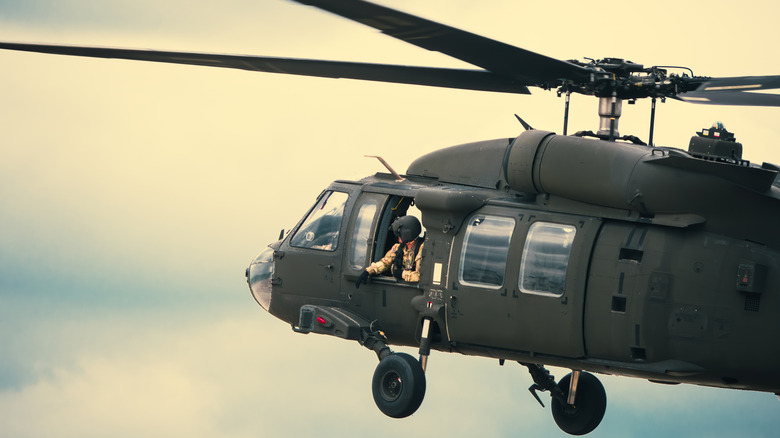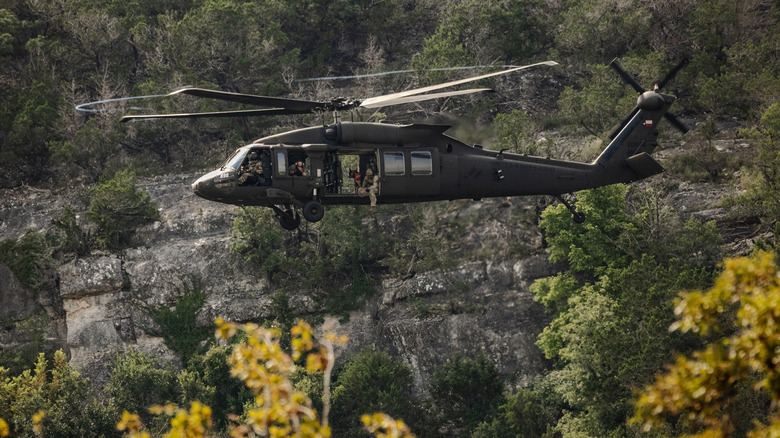Senator Ted Cruz, chairman of the Senate Commerce Committee, is introducing a new bill that would “close the regulatory loophole” that allows military aircraft to turn off key flight tracking technology. This is in response to the fatal crash of an Army Black Hawk helicopter with American Airlines Flight 5342 in January, during which the Black Hawk had its location-signaling ADS-B system switched off. Since the crash, Cruz has zeroed in on this system as a key safety vulnerability that needs to be addressed and has been fighting with the Army about it ever since, even accusing the military of hiding the truth from the public.
In addition, the Rotorcraft Operations Transparency and Oversight Reform bill (ROTOR, get it?) will force a review of helicopter flightpaths near airports, per CNN. A main contributor to the crash was the fact that the Black Hawk flew across the landing route for the nearby Ronald Reagan Washington National Airport. If that seems like a dangerous thing to do, you’d be right: The New York Times reports there has been one near collision between a helicopter and an airplane every single month between 2011 and 2024 at this single airport alone. That’s somewhere around 150 incidents at one airport.
So maybe rerouting helicopters isn’t a crazy thing to do, although given how congested Washington airspace is, that’s easier said than done. But another contributing factor was that it was hard to tell where the helicopter actually was, since its ADS-B was switched off. What’s more, this was done legally and on purpose, as per military protocol. The Pentagon doesn’t seem to want to change that, and Cruz is going into full meltdown over it.
The ADS-B system and what its rules are
ADS-B stands for Automatic Dependent Surveillance-Broadcast, an onboard system that sends and receives information about aircraft positions to the public. This is actually two separate components: ADS-B In, which collects information from other aircraft, and ADS-B Out, which transmits that particular aircraft’s position to everyone else. The latter is similar to a transponder, a different system that does roughly the same thing. The big difference is that a transponder only signals every ten seconds or so, whereas ADS-B does so every second.
In 2010, the FAA required that all aircraft that had ADS-B Out installed, whether civilian or military, were required to have it on at all times. This would give air traffic controllers second-by-second flight tracking. By 2020, all aircraft were required to get it installed, so the system’s use would be universal.
Or would it? In 2019, under pressure from the Pentagon, the FAA revised the rule. As you might imagine, military aircraft flying sensitive missions don’t exactly want to broadcast their location. ADS-B is an open protocol, so anybody with the interest and the right equipment can track it. So an exception was made to let the military switch it off on missions of national security — or training missions of national security, which do happen pretty frequently. In fact, the January crash was one.
What we know about the January crash so far
On January 29, an Army Black Hawk flew a training exercise simulating a “continuity of government” mission, per the Army Times. Basically, the crew needed to drill the possibility of rescuing a government figure from an attack. Government figures tend to be in Washington, DC, which is why the Black Hawk flew through there.
As the Times lays out in a detailed report, the ADS-B was switched off as part of the training exercise, which was legal under the FAA’s revised rule. That meant the nearby National Airport’s air traffic controller didn’t have second-by-second flight tracking on the helicopter. As the Army later pointed out, it did still have its old-school transponder on, so it wasn’t totally invisible, and it was in radio contact with the controller.
However, that controller was double-booked, handling both helicopter and plane traffic simultaneously. That’s not standard procedure, but it was probably necessitated by the shortage of controllers this country is suffering from. As part of that, the controller allowed the pilot to go to visual separation, which means the pilot was free to just visually look around for planes instead of getting specific instructions from the tower. While we may never know the details, it appears the pilot just did not see the plane it crashed into.
The Cruz-ade
As chairman of the Senate Commerce Committee, which oversees transportation, Cruz is in charge of the investigation into the accident. And boy, is he ever mad. While he does also bring up issues like flightpaths, he seems to have particularly fixated on the ADS-B system, and specifically, the Pentagon’s exception from it. A month after the incident, he said there was “no compelling national security reason for ADS-B to be turned off.” The military didn’t exactly agree here; its stance is that it has to be able to drill under the same conditions as the real thing.
Then in March, Cruz and other senators asked the Army for a copy of its memo outlining how it uses (or doesn’t use) ADS-B. The Army, apparently, refused, according to Reuters. That did not go over well with the senator from Texas, who lashed out by asking, “What doesn’t the Army want Congress or the American people to know about why it was flying partially blind?” He then threatened the most powerful armed force on earth with a subpoena.
The Army finally relented in April, handing the memo over. From there, it was determined that the Army “hardly if ever” had ADS-B switched on during Washington flights. If ever! So now, with his ROTOR Act, Cruz is coming for the FAA’s regulation by trying to override it with legislation. The bill would require the military to use the flight tracking system if the mission goes anywhere near civilian planes. That’s a shot fired straight at the Army, who probably aren’t going to like being told to broadcast its helicopters’ locations all the time.
There’s a long way to go before the bill becomes law, of course. It’s not even clear that having ADS-B on would have prevented January’s tragedy; the pilot was in visual separation anyway. But for sure, one near miss per month is an unsustainable situation, and something has to change.





